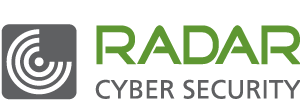
Categories
Problems that solves
Aging IT infrastructure
No IT security guidelines
Unauthorized access to corporate IT systems and data
Risk or Leaks of confidential information
Malware infection via Internet, email, storage devices
Shortage of inhouse IT resources
No centralized control over IT systems
Non-existent or decentralized IT incidents' management
Risk of attacks by hackers
Risk of data loss or damage
Non-compliant with IT security requirements
Shortage of information for decision making
Insufficient risk management
Values
Ensure Security and Business Continuity
Support Decision Making
Ensure Compliance
Manage Risks
NetSPI Penetration Testing as a Service
Whether it’s scoping a new engagement, parsing real-time vulnerability reports, assisting you with remediation, or keeping you compliant year round, PTaaS has you covered.
Description
Penetration Testing as a Service
Your organization is always-on and your security should be too. NetSPI Penetration Testing as a Service (PTaaS) makes expert penetration testing team available for you when you need it. Whether it’s scoping a new engagement, parsing real-time vulnerability reports, assisting you with remediation, or keeping you compliant year round, PTaaS has you covered.The Benefits of PTaaS
- Enhanced Reporting.Live, consumable testing results are delivered via Resolve, our vulnerability management platform, giving you a single-pane view of vulnerabilities and allows you to drill down into the data to see trend analysis year over year.
- Accelerated Remediation. Live, interactive reporting makes the path to remediation clear and easy. Integrate with your ticketing systems and remediation tools to streamline the remediation process.
- Reduced Administrative Time. Spend more time delivering value to the business, and less time managing projects. From scoping to remediation, PTaaS removes administrative hassles and makes sure your pen tests start and end on time.
- Scan Monster. Find vulnerabilities faster with NetSPI’s proprietary continuous scanning technology. Integrated with Resolve, vulnerabilities are automatically deduplicated and are verified by NetSPI’s pen testing team, bringing clarity to your results.
How it works?
Advisory Services
To fully recognize the value of your technical testing efforts and help ensure the greatest security posture for your organization, multiple Threat and Vulnerability Management (TVM) program elements need to work together harmoniously. NetSPI has developed a comprehensive framework that helps our clients thoughtfully consider the necessary elements of a TVM program.
Application Penetration Testing
NetSPI’s team of application security testing experts specialize in identifying and exploiting vulnerabilities in Web, Mobile, and Thick Applications. Whether your application is hosted internally, or in the cloud, NetSPI evaluates applications for security vulnerabilities and provides recommendations to your company with clear, actionable remediation instructions to improve your overall security posture.
Network Penetration Testing
Attack surfaces have significantly increased with the explosion of cloud and IoT. NetSPI’s penetration testing supports you in identifying unauthorized access to your protected systems. Through a combination of External, Internal, and Wireless Network penetration testing, NetSPI can test your entire infrastructure.
Cloud Penetration Testing
Cloud penetration testing services will identify security gaps in your cloud infrastructure and provide you with actionable guidance for remediating vulnerabilities and improving your organization’s cloud security posture.Adversarial Simulation
Companies continue to invest in security solutions, training, and managed service providers without fully testing their effectiveness. Let NetSPI help you assess those investments, and better understand where to spend time and money based on a true evaluation of your baseline detection and response capabilities. Adversarial simulation services can be customized to meet your needs and help you find the answers you’re looking for through Detective Control Reviews, Red Team Operations, & Social Engineering Engagements.
Continuous Penetration Testing
NetSPI’s Continuous Penetration Testing enhances your recurring deep-dive manual penetration tests with high-quality, low-cost touch points throughout the year. Scan Monster allows your networks and applications to be scanned at any rate you decide, with all asset and vulnerability information flowing directly into Resolve. All critical vulnerabilities are immediately escalated to NetSPI’s penetration testing team and verified within 48 hours.Scheme of work



















